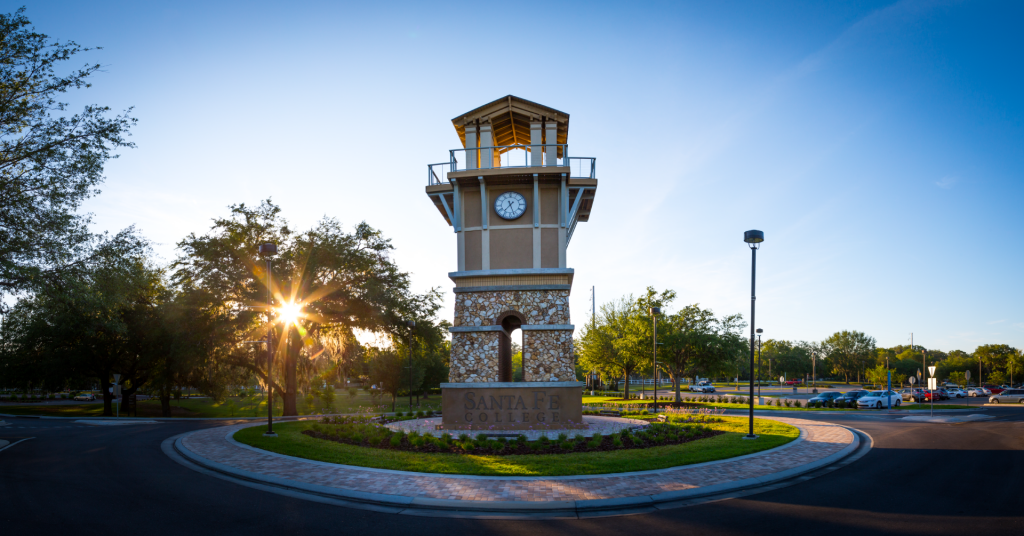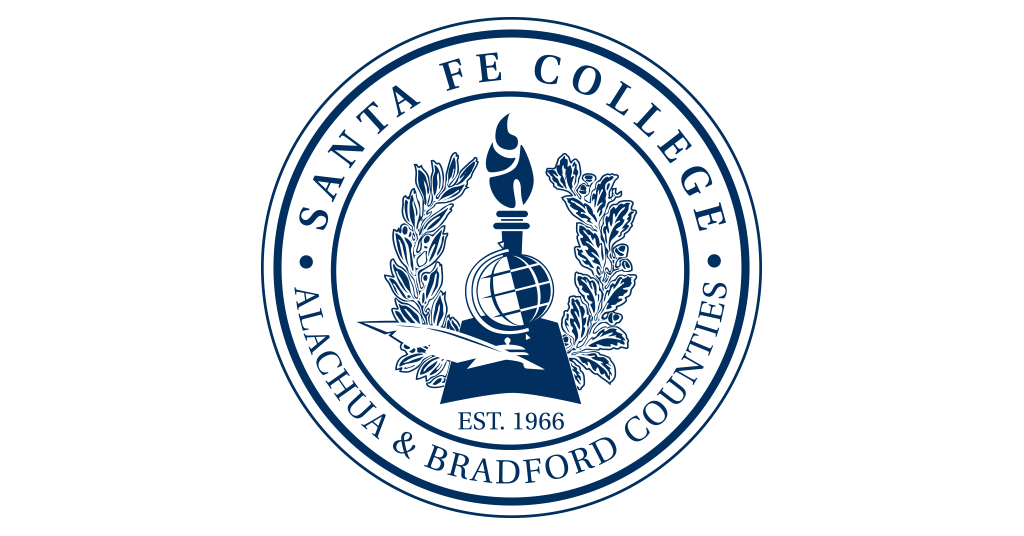Construction Students Build a Complete House for a Low-Income Family
December 6, 2010
Enter the central dome area of the Charles R. Perry Construction Institute, and you'll feel like you are inside a Russian doll: within the institute is a whole separate building, the framework of a three bedroom, two bathroom house.
Through a partnership with the City of Gainesville and Santa Fe College, students of Santa Fe's construction programs are playing architect to one underprivileged family's dreams by building a 1,248-square-foot home that the city will ultimately turn into affordable housing.
“We are very proud of this project,” said Jane Parkin, director of Santa Fe's construction and technical programs. “The mayor [Craig Lowe] even came to see it and was very happy to see the progress we've been making.”
For over 25 years, Santa Fe College's construction program has teamed up with Habitat for Humanity to provide affordable housing and construction experience for Santa Fe students. In the past, BCN classes have met on site at habitat projects where students would volunteer and receive instruction from their professors. Now, replacing that practice, Santa Fe hopes to assemble one house per year inside the Perry Construction Institute, starting with this one.
“A lot of contractors are involved in Habitat for Humanity and encourage their employees to get involved too,” said Fred Hart, coordinator of Santa Fe's building construction program. “The construction industry puts a lot of emphasis on practical experience. The problem they have with recent graduates is that they come out with a lot of theory and not a lot of practical experience. This is a good way to get that experience.”
The house under construction, named the Santa Fe I, also manifests the vision of Charles R. Perry himself, a successful local builder who helped finance the construction institute that bears his name. In the institute, all the labs for each different trade are organized in a U-shape around an open work floor, designed to facilitate the construction of large projects such as this.
“Everyone working together — that's what it's all about,” said Hart. “Chuck's idea was to have one place where all levels of education could work on a single project, so that coordination was taught.”
So far, students from the construction institute's apprenticeship programs and from the community development program YouthBuild, and AAS and AA students who will transfer to the University of Florida's Rinker School of Construction, have all collaborated on building the framework for the Santa Fe I. This fall semester's techniques class has been contributing 3 hours a day, two days a week to the project since midterm. In addition, members of the Student Builders Association, who already volunteer at the Alachua Habitat for Humanity Thrift Store, donate their Friday afternoons to completing any work needed to keep construction on schedule.
“It's important to give something back,” said Scott Adkins, treasurer for Student Builders, who has volunteered almost 10 hours to the project outside of class. “We get the hands-on experience, but we also get to give back to someone who wouldn't have this otherwise. You really want to make sure you get it right. We were just doing the roofing patterns, and if you don't get that right, it's going to fall apart or your roof might fly off. Someone is going to have to live in this, so hopefully it'll last for years and years.”
The Santa Fe I represents the largest student project the Perry Construction Institute has ever undertaken and its first attempt at building an entire house. Before the Santa Fe I project was announced, construction students were limited to manufacturing small-scale buildings, such as 8 feet-by-8 feet sheds.
“One of those sheds is the size of one of the rooms in this house,” said Adkins. “You have a lot more opportunity to see different situations here. With this house, you have corners and hallways to consider. There's a lot more involved. It's definitely a benefit to the program and especially to the people who are going to receive it.”
The Santa Fe I is such a huge undertaking that it is being built in two separate 12-foot-wide sections that will ultimately be lifted by crane onto a prepared lot donated by the Gainesville City Commission. Hart estimates that over $25,000 is being invested in material for the framework, and a similar amount will be spent for mechanical equipment such as heating, ventilation and air conditioning, plumbing and electrical.
Construction on the Santa Fe I has been briskly progressing, with plans to finish the carpentry by the end of the fall semester so that students can start hanging doors and setting windows at the beginning of spring semester. Completion of the entire structure is anticipated for April 2011.
In the future, Santa Fe College hopes to partner with other construction programs at local high schools and the University of Florida to create more affordable housing for low-income families.
“I'm somebody who hasn't come from a construction background, so this extra hands-on work helps me see the nuts and bolts of how things work, ” said Adkins. “It's one thing to understand how things are supposed to be and another to come out and actually do something. One of the things that draws people to the field is that you make something tangible at the end of the day. You have knowledge that other people don't have, and you can help people with those skills.”
For more information about Santa Fe's construction and technical programs, please contact Jane Parkin at 352-395-5363 or jane.parkin@sfcollege.edu.
~ This press release is by Allison Griner, Communication Specialist, College Relations
CONTACT:
- Jane Parkin, director, Construction and Technical programs, 352-395-5363 or jane.parkin@sfcollege.edu
- Professor Fred Hart, coordinator, construction programs, 352-395-5252 or fred.hart@sfcollege.edu
- Julie Garrett, for assistance facilitating your story, 352-870-2924 (cell) or julie.garrett@sfcollege.edu

